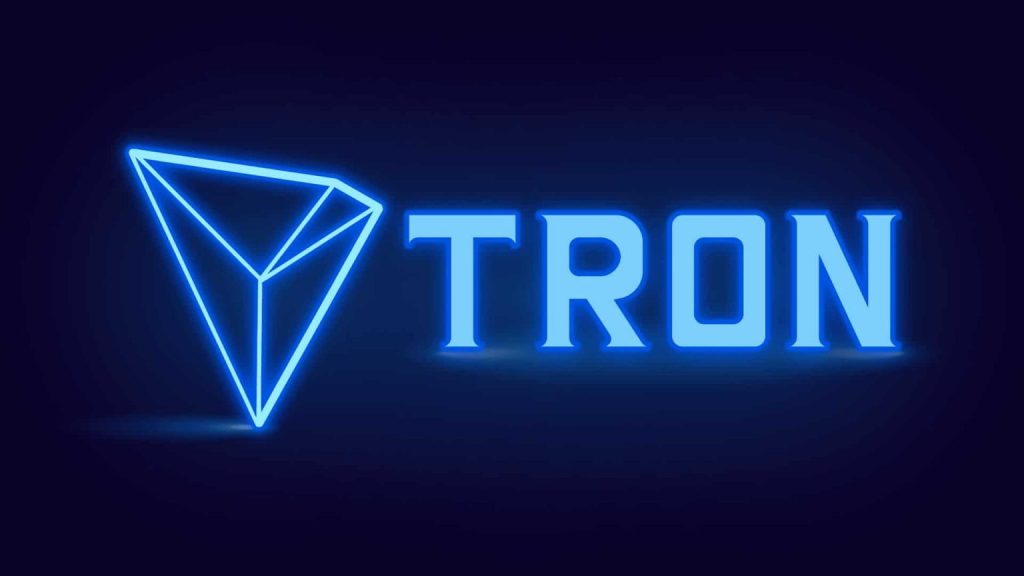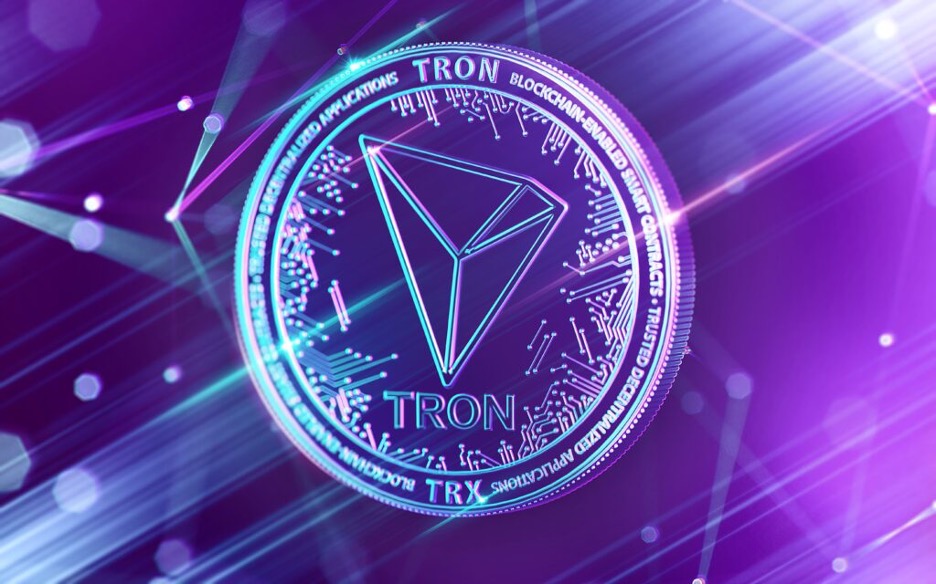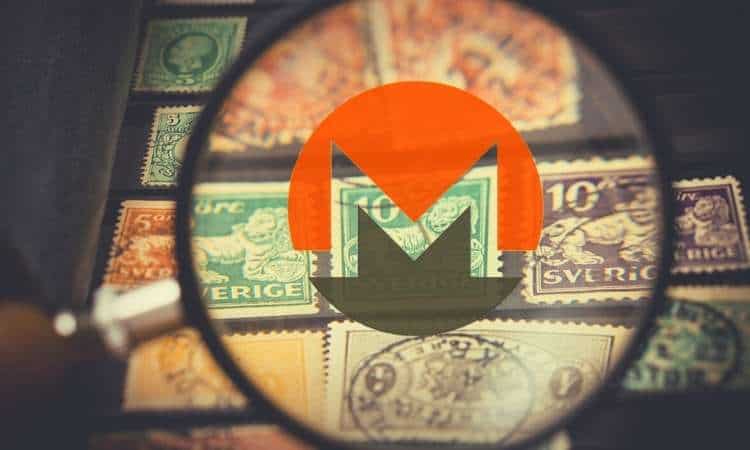According to our current TRON price prediction, the value of TRON is predicted to drop by -6.01% and reach $ 0.049922 by December 17, 2022. According to our technical indicators, the current sentiment is Bearish while the Fear & Greed Index is showing 27 (Fear). TRON recorded 16/30 (53%) green days with 3.16% price volatility over the last 30 days. Based on our TRON forecast, it’s now a bad time to buy TRON.

Tron ($TRX) Total Transfer Value Breaches $5 Trillion-Mark
Tron ($TRX) appears to be reaching milestones of late, as most traders within the crypto ecosystem flock to the network to settle transactions. The PoS blockchain recently crossed $5 trillion in value of transactions carried out on it. This feat highlights the increasing interest in its high-throughput and low-cost services.
Total transfer Value on #TRON has surpassed $5 trillion. It is the power of blockchain. pic.twitter.com/96AIgg67j1
— H.E. Justin Sun🌞🇬🇩 (@justinsuntron) September 1, 2022
Justin Sun, founder of Tron, revealed the accomplishment on Twitter in the early hours of Thursday. According to the screenshot from Sun, Tron’s blockchain explorer, TronScan indicates that the total transfer value on the Tron blockchain is currently $5.2 trillion. This figure represents one of the highest transfer values in the industry. Sun ascribed the feat to “the power of blockchain.”
Additionally, data from TronScan also revealed that $7.9 billion worth of transactions had been carried out on Tron in the past 24 hours. Furthermore, the total number of transactions on the blockchain is about 3.7 billion. 4.7 million transactions have been carried out on the chain in the past 24 hours.
Tron has witnessed magnificent growth since its release in 2018. Four years later, the network boasts of over 109 million accounts. Despite hosting just 10 protocols, it remains the second largest blockchain by total value locked (TVL), per data from DefiLlama. With a current TVL of $5.72B as of press time, it surpasses Binance Smart Chain, Avalanche, Polygon and Solana.
Touted as being the next Ethereum, Tron is behind Ethereum only in terms of TVL. Ethereum’s TVL is a whopping $34.26B with about 544 protocols. While Ethereum accounts for 58% of all TVL in DeFi, Tron comes second with a 9.75% contribution.
In addition to reaching these milestones, Tron’s PoS system seems to be the least power-hungry. As previously reported, recent data reveals that Tron is the most energy-efficient blockchain in the crypto ecosystem.
The Crypto Carbon Ratings Institute (CCRI) released a report on energy consumption rate by different blockchains. The report noted that Tron uses the least energy out of all blockchains.
The CCRI report mentioned that its annual energy consumption rate equals that of 15 American households. Per data from the report, the chain uses 99% less energy than Bitcoin, with a 162,868 kWh annual consumption rate. For context, Bitcoin’s annual energy consumption rate is a whopping 83 million kWh.
TRON Price History
The native currency of the TRON network, the TRX token, was initially made available to investors in the initial coin offering (ICO) at 0.00000038 BTC per token in 2017. With BTC’s historic price of roughly $4,600 at the time and 40 billion TRX sold, $70 million was raised in the public token sale.
According to the TRON price chart and historical TRON price data, the price of TRX tokens increased by more than 50-fold in the span of fewer than 30 days between December 2017 and January 2018.
Here is what the historical TRX price data tells us about key milestones in the token’s price history:
- $0.0019 – TRX coin’s price at the time of the ICO sale in 2017 was $ 0.0019 per token
- $0.0100 – The price of TRON surpassed $0.0100 for the first time in mid-December 2017
- $0.0500 – TRON’s price rallied beyond $0.0500 in the final days of December 2017
- $0.1000 – The price of TRX surged past $0.1000 for the first time in March 2018
- $0.2000 – TRON coin’s price reached the $0.2000 price milestone in March 2018, just four months after the token initially started trading
For a glimpse into potential future TRX price movements in addition to the TRON live price, you can follow our algorithmically generated TRON price predictions that take into account TRX’s current price and a number of market indicators, including Fear & Greed Index, market sentiment, overall volatility, and more. You can also check the up-to-date market rate of 1 TRX to USD via our handy crypto-to-fiat and crypto-to-crypto conversion feature.
Overview of the TRON Ecosystem
In the years since its founding, the TRON project has grown to become one of the most feature-rich platforms in the industry thanks to its extensive suite of blockchain products and services. The platform features a dedicated non-fungible token (NFT) marketplace, fungible and non-fungible token standards, a specialized dApp system, an interoperable BTT Chain, a decentralized stablecoin, and more. We’re going to discuss each of these features in more detail in the following sections.
Native TRON tokens
TRON allows for the creation of new tokens via three distinct token standards whose role in the ecosystem is similar to the role of ERC-20, ERC-721, and others on the Ethereum platform. Here’s a quick breakdown of TRON token standards:
- TRC-10 – TRC-10 tokens are based on the TRON blockchain rather than TVM. Each TRON network account can issue a new TRC-10 token by paying a one-time fee of 1,024 TRX. The TRC-10 token standard outlines rules for transactions and the issuance of new tokens.
- TRC-20 – TRC-20 is a set of smart contract standards which includes requirements for the issuance of TRC-20 digital assets. In addition, the TRC-20 token standard includes rules for supply, transfers, and asset docking. TRC-20 assets can be used to participate in various DeFi protocols.
- TRC-721 – TRON’s third token standard is responsible for the issuance of non-fungible tokens (NFTs) on the TRON platform. The TRC-721 standard is fully compatible with Ethereum’s non-fungible token standard called ERC-721.
BitTorrent Chain
BitTorrent Chain – also referred to as BTT Chain – is a scalable heterogeneous blockchain designed for cross-chain interoperability. BTT uses Proof-of-Stake (PoS) and multiple validator nodes to achieve a high degree of security, albeit at the cost of higher centralization. Thanks to a dedicated cross-chain bridge and inherent interoperability, BTT enables a seamless transfer of digital assets and dApps across supported blockchains.
NFT Marketplace
TRON’s APENFT Marketplace allows users to create, discover, and trade NFTs. The platform is powered by BitTorrent File System (BTFS) – a type of decentralized storage connected to BTT Chain – which guarantees data safety and high reliability.
SUN Network
SUN Network, also known as DApChain, employs a sidechain design and is compatible with the TRON Protocol. Sidechains use DPoS consensus and connect to the TRON mainchain, which allows developers to more easily deploy and migrate dApps. In addition, thanks to their project-specific design, sidechains are cheaper to run and boast low-cost transactions.
USDD Stablecoin
USDD (originally named Digital USD and later renamed to USDD) is a decentralized stablecoin on TRON, BNB Chain, and Ethereum that is pegged to the value of the US dollar at a 1:1 ratio. USDD is issued by TRON DAO and collateralized with a basket of cryptocurrencies, including TRX and USD Coin (USDC).
TRON DAO
TRON DAO is the largest decentralized autonomous organization (DAO) in the industry. Users can participate in the DAO with TRX to take part in the decision-making process and directly influence the future development of the TRON platform.

About TRON
TRON is an open-source blockchain platform that went live in June of 2018. Prior to the mainnet launch, the platform’s native asset TRX existed as an ERC-20 token on the Ethereum (ETH) blockchain. The TRON blockchain is designed to host smart contracts and decentralized applications (dApps). Similar to the concept popularized by Ethereum, TRON can also be used to issue custom blockchain-based tokens, which must adhere to the project’s own technical standards, such as TRC-10 and TRC-20.
Here’s a quick overview of key facts about TRON and its core blockchain features:
- TRON is a blockchain platform that uses a delegated proof-of-stake (DPoS) mechanism to reach a consensus about the state of its ledger
- The TRON ecosystem consists of a native NFT marketplace, interoperable BitTorrent Chain, sidechains, and a decentralized stablecoin USDD (USDD)
- The TRON network shares a lot of similarities with Ethereum, both due to its token standards and smart contract functionality
- Chinese cryptocurrency billionaire Justin Sun founded the TRON foundation in 2017 to pursue a “truly decentralized Internet”
- The native digital currency of the TRON ecosystem, the TRX token, was initially sold in an ICO in 2017 at a price of roughly $0.0019 per coin
What is TRON and how does it work?
The TRON platform aims to provide the scalability required to support popular dApps by employing a delegated proof-of-stake (DPoS) architecture. This design allows the TRON network to perform fast transactions with minimal fees. This has allowed the platform to become one of the most active in the industry in terms of transaction volume – TRON-native Tether (USDT), for instance, regularly tops the lists of most transacted cryptocurrencies.
TRX holders use their tokens to vote for Super Representatives (SRs), which maintain the TRON blockchain. At any given time, the 27 SR candidates with the most votes are active and take part in the TRON blockchain’s consensus process.
Some of TRON’s biggest competitors when it comes to popular blockchain platforms for smart contracts and dApps are Solana and Ethereum. Projects such as BitTorrent (BTT) and WINkLInk (WIN) have used the TRON platform to create their own tokens and raised funding through token sales.
TRON employs a 3-layer blockchain design, with a dedicated storage, core, and application layer. TRX, which stands for TRONIX, is issued by TRON DAO, a decentralized autonomous organization (DAO) governing the TRON ecosystem. TRX is used as a primary medium of exchange and as the main asset covering transaction fees on the network.
Creation of TRON
The TRON project was founded by Chinese entrepreneur Justin Sun, and its development is headed by the TRON Foundation, which was established in 2017. The TRX token started trading on cryptocurrency exchanges in September of 2017, after the successful completion of the project’s initial coin offering (ICO) campaign in August 2017. In total, 15,200 BTC (worth approx $70 million at the time) were raised in the month-long public sale of 40 billion TRX.
Sun acquired San Francisco-based tech company BitTorrent Inc. in 2018. By leveraging the sizable existing user base of BitTorrent’s products, the TRON team aims to boost the adoption of the TRON blockchain. BitTorrent launched BitTorrent Token (BTT), its own token on the TRON blockchain, in 2019.
It is worth noting that Sun has drawn substantial amounts of criticism over the years, both for his often brash and outspoken behavior and for allegedly copying features from competing blockchain platforms (such as decentralized stablecoin, token standards, etc.).
According to TRON’s 10-year roadmap, the final stage of the TRON development outlined in the white paper is slated to roll out in 2027. In the future, the TRON team intends to pursue safer and faster TROM Virtual Machine (TVM) operations for enhanced smart contract functionality, better cross-chain support, and deeper decentralized finance (DeFi) integrations, with an end goal of building an all-encompassing Web3 hub.
